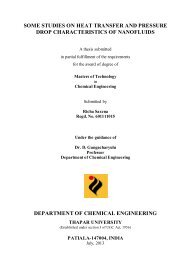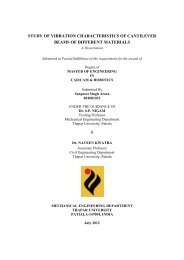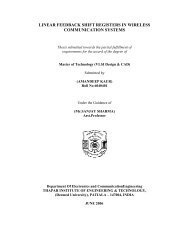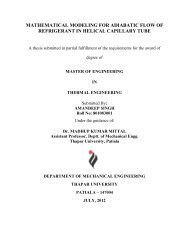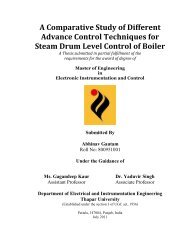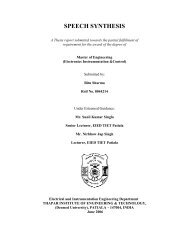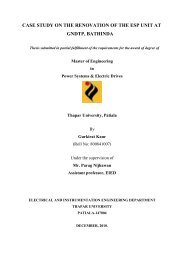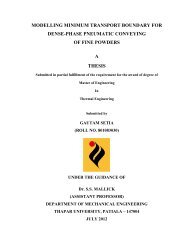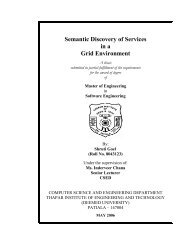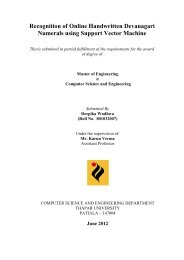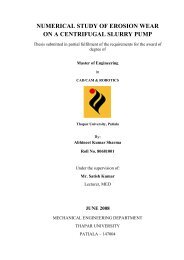from indigenous fermented foods and human gut ... - Thapar University
from indigenous fermented foods and human gut ... - Thapar University
from indigenous fermented foods and human gut ... - Thapar University
Create successful ePaper yourself
Turn your PDF publications into a flip-book with our unique Google optimized e-Paper software.
109<br />
Chapter IV: Results<br />
Fig. 4.9 CLUSTAL X alignment of bacteriocin <strong>from</strong> L. casei LAM-1 with Pisciocin V1b,<br />
<strong>from</strong> Carnobacterium piscicola (1), Lactococcin MMFII <strong>from</strong> Lactococcus lactis (2),<br />
Sakacin-A <strong>from</strong> L. sakei (3), Curvacin-A <strong>from</strong> L. curvatus (4), Enterocin P <strong>from</strong> E.<br />
feacium (5). Asterisks below the aligned sequences indicate amino acids present in all<br />
seven sequences. Positions with colons below contain a residue of the strongly conserved<br />
groups in all seven sequences, <strong>and</strong> periods indicate more weakly conserved groups in all<br />
seven sequences<br />
The physiochemical properties of the peptide sequence the molecular weight,<br />
theoretical isoelectric point (pI), amino acid composition, atomic composition <strong>and</strong> gr<strong>and</strong><br />
average of hydropathicity (GRAVY) predicted by Bactibase database (Table 4.24).<br />
4.11 Batch fermentation for bacteriocin production L. casei LAM-1<br />
Production of bacteriocin by L. casei LAM-1 was studied under batch culture<br />
conditions as shown in Fig. 4.10 <strong>and</strong> 4.11. Cell density of L. casei LA-1 increased <strong>from</strong> 0.1 to<br />
3 (OD600 nm) during 48 h of growth at 37°C. The pH of the medium decreased <strong>from</strong> 6.0 to 3.5<br />
over the same period. Bacteriocin production started at the late exponential phase <strong>and</strong> reached<br />
its maximum at the early stationary phase suggesting that the antimicrobial peptide to be a<br />
secondary metabolite, whereas maximum biomass occurred at 18 h. Results showed that L.<br />
casei LAM-1 produced bacteriocin in MRS broth <strong>and</strong> exhibited higher bacteriocin activity of<br />
2844 AU/ml at pH 6.5 <strong>and</strong> temperature around 37°C at 20 h.



